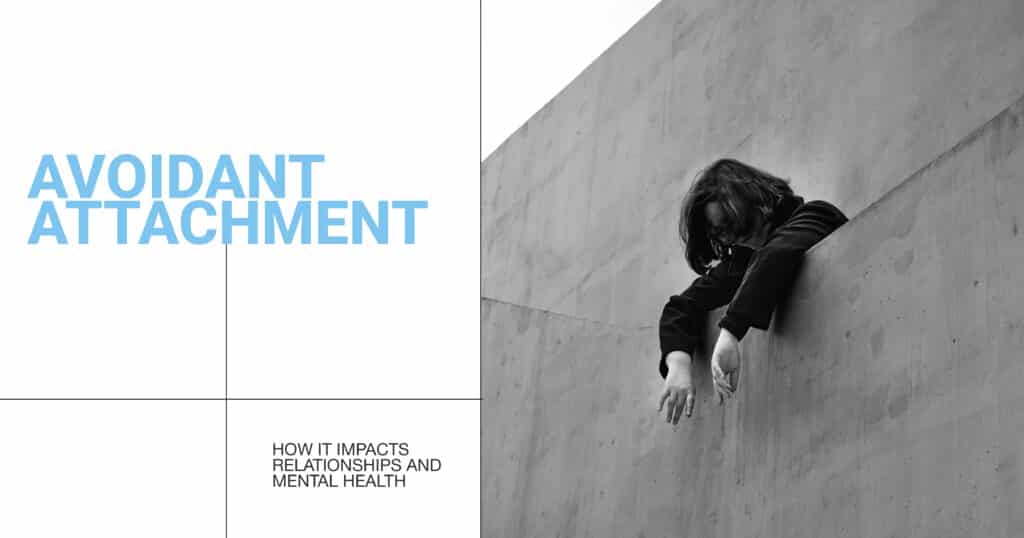The deeply ingrained pattern of emotional detachment and avoidant attachment develops from early childhood experiences. People with this attachment style experience difficulties building strong emotional connections because they struggle to be intimate and vulnerable while maintaining close relationships. They develop this avoidance behavior as a protective response to unmet emotional needs that occur during their formative years.
The fear of dependence leads these people to adopt self-reliance as a protective strategy against possible emotional pain or disappointment. The established pattern creates obstacles for people to trust and connect with others, preventing them from fully participating in meaningful emotional relationships.
Understanding the Roots in Childhood Attachment Wounds
Children typically develop avoidant attachment patterns during their early years of life. Children who experience emotionally unavailable, dismissive, or inconsistent caregivers will learn to hide their need for comfort and connection.
The attachment injuries experienced during childhood lead people to develop subconscious beliefs about emotional intimacy as unsafe or unreliable, which results in adult patterns of emotional withdrawal.
How It Differs From Anxious Attachment
The two attachment styles of avoidant and anxiety develop from early childhood experiences yet present distinct behaviors. People with anxious attachment styles yearn for intimacy but avoid it. In contrast, those with avoidant attachment styles maintain independence as their top priority and experience emotional overload when close to others.
The opposing attachment styles between partners create tension, especially when dating someone who avoids intimacy because one person yearns for closeness, but the other person distances themselves.
Signs of Avoidant Attachment in Adults
People with avoidant attachment patterns in relationships show delicate yet important behavioral cues. These individuals tend to keep their distance from others while facing challenges when expressing love through words and sharing profound emotional experiences.
The fear of depending on others and the reluctance to rely on others results in emotional shutdown, which creates challenges in maintaining enduring intimate relationships. Some people will deny their emotional needs by calling their detachment a strength, instead of understanding it as a childhood-developed protective response.
Emotional Distance, Independence, and Shutdown Responses
People with avoidant attachment often pride themselves on their independence. They may resist relying on others and feel uncomfortable when partners or loved ones seek emotional support from them.
This emotional distancing can result in a cycle where they withdraw further whenever intimacy increases, leading to misunderstandings and unmet emotional needs in relationships. These patterns can eventually lead to loneliness, dissatisfaction, and avoidant attachment breakup, as partners may feel neglected or unfulfilled.
Avoidant Attachment in Relationships and Love
The relationship between avoidant attachment and love presents significant difficulties. People with this attachment style show occasional affection yet experience difficulties sustaining emotional intimacy in relationships. The fear of opening up leads them to avoid making complete emotional commitments.
The partners of avoidant individuals often doubt the relationship’s intensity while experiencing emotional emptiness. The natural tendency of avoidant partners to pull back should not be mistaken for a lack of emotions since this behavior developed as a defense mechanism against intimacy.
The Impact of Avoidant Attachment on Mental Health
The emotional disconnection that is associated with avoidant attachment can cause problems with mental health. Suppressing emotions and avoiding intimacy can cause chronic stress, loneliness, and even depression.
These patterns may eventually lead to problems forming close friendships, working relationships, and even knowing oneself. Lack of emotional support and avoidance of vulnerability can prevent personal growth and create barriers to happiness.
Healing Avoidant Attachment Through Therapy
People need self-awareness, patience, and professional guidance to break free from avoidant attachment patterns. Through therapy for avoidant attachment, people gain essential tools to help them identify and overcome their emotional avoidance and build better relationships.
The therapists use methods that help patients both express emotions and confront their fundamental fear of intimacy. A professional relationship helps patients identify hidden fears behind their detachment while learning more constructive coping methods.
Inner Child Work and Attachment-Focused Techniques
Inner child healing represents a fundamental component for healing avoidant attachment patterns. People must resolve their emotional injuries while becoming aware of hidden emotions as they build trust in relationships.
Through attachment-focused therapy, people learn to reinterpret their experiences while building stronger, more secure bonds with their loved ones. People who care for their inner child while practicing vulnerable behavior will transition from avoidance into healthy emotional connection.
How to Overcome Avoidant Attachment and Build Secure Bonds
The first step to overcoming avoidant attachment requires recognizing intimacy fear and actively working against relationship-negative beliefs. The process requires open communication, emotional expression, and progressive emotional vulnerability development.
Building trust in others, seeking supportive relationships, and developing emotional regulation skills lead to attachment pattern transformation over time. Avoidant individuals who dedicate patience and effort will learn to accept intimacy and establish meaningful, fulfilling relationships.
Struggling With Avoidant Patterns? Contact Clear Mind Treatment for Support
Professional support offers essential help to people who face avoidant attachment issues in their relationships. Clear Mind Treatment provides avoidant attachment therapy to help people overcome emotional barriers while developing stronger relationships through professional guidance. The path to healing exists, while proper treatment methods lead to emotional satisfaction and secure bond development.
FAQs
What are the signs of avoidant attachment?
Avoidant attachment manifests through emotional withdrawal, difficulty opening up to others, and an avoidance of dependence on others.
How does avoidant attachment affect relationships?
People with avoidant personality traits face challenges when forming close bonds, which results in feelings of emotional distance and relationship breakdowns.
Can avoidant attachment be healed?
Yes, healing avoidant attachment is possible through therapy, self-awareness, and intentional efforts to develop emotional openness and trust.
What therapy helps avoidant attachment?
The treatment for avoidant attachment typically consists of attachment-based therapy, cognitive-behavioral techniques, and inner child healing methods to resolve the core emotional injuries.
Is avoidant attachment linked to childhood trauma?
Attachment trauma, together with childhood attachment injuries, commonly leads people to develop avoidant attachment patterns. The way children experience neglect or receive inconsistent care from their caregivers leads to lifelong patterns of detachment.






